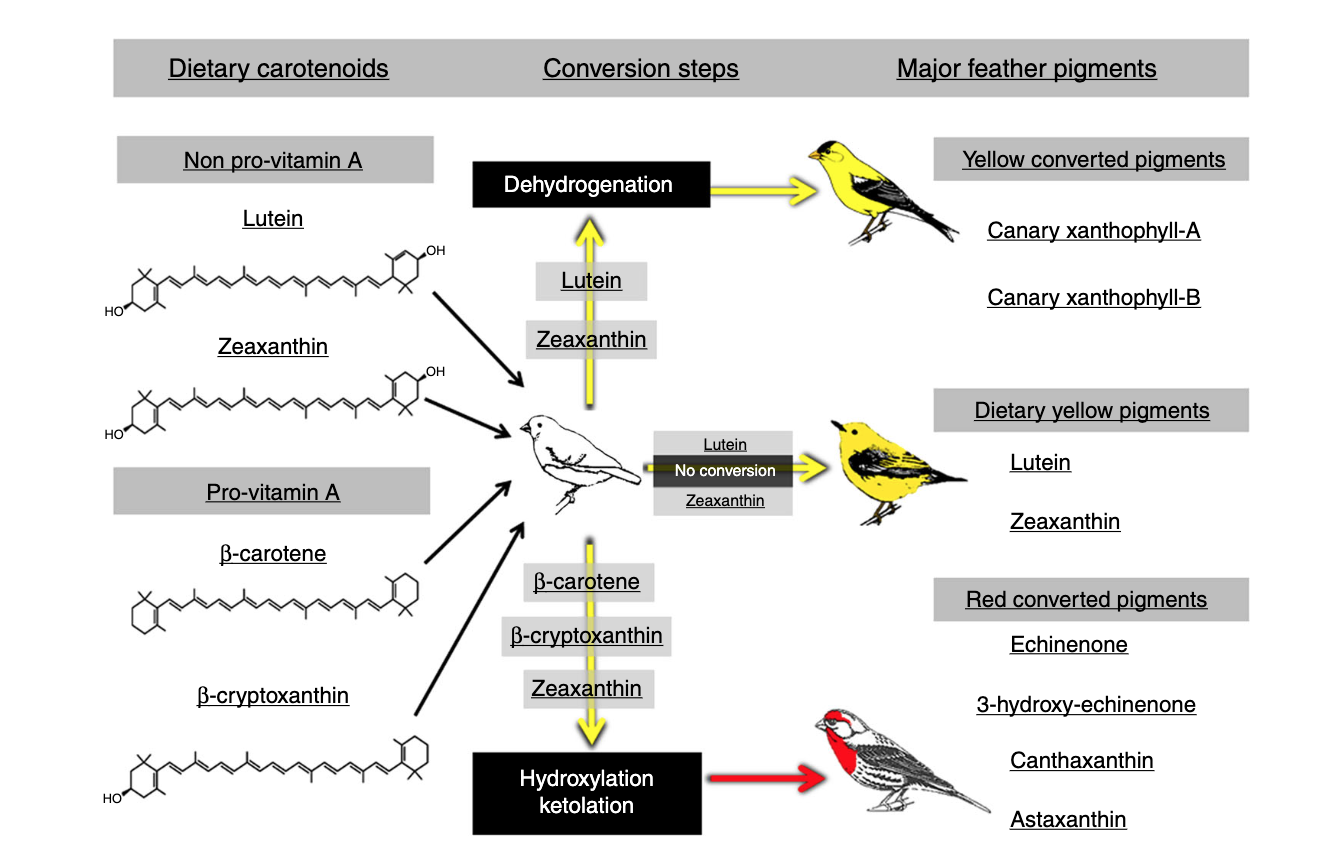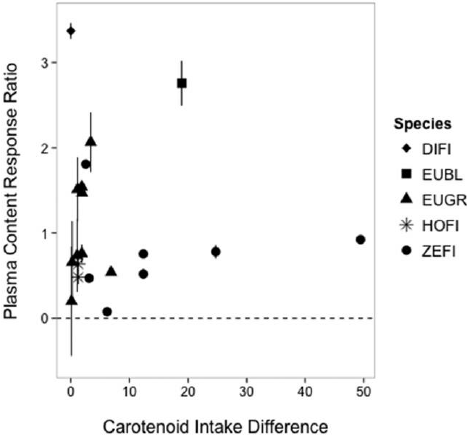Keyword: Carotenoid

Weaver, R. J., E. S. A. Santos, A. M. Tucker, A. E. Wilson, and G. E. Hill. 2018. Carotenoid metabolism strengthens the link between feather coloration and quality. Nature Communications 9:73. (Clarivate Analytics Web of Science Highly Cited Paper)
Abstract
Thirty years of research has made carotenoid coloration a textbook example of an honest signal of individual quality, but tests of this idea are surprisingly inconsistent. Here, to investigate sources of this heterogeneity, we perform meta-analyses of published studies on the relationship between carotenoid-based feather coloration and measures of individual quality. To create color displays, animals use either carotenoids unchanged from dietary components or carotenoids that they biochemically convert before deposition. We hypothesize that converted carotenoids better reflect individual quality because of the physiological links between cellular function and carotenoid metabolism. We show that feather coloration is an honest signal of some, but not all, measures of quality. Where these relationships exist, we show that converted, but not dietary, carotenoid coloration drives the relationship. Our results have broad implications for understanding the evolutionary role of carotenoid coloration and the physiological mechanisms that maintain signal honesty of animal ornamental traits.

Koch, R. E., A. E. Wilson, and G. E. Hill. 2016. The importance of carotenoid dose in supplementation studies with songbirds. Physiological and Biochemical Zoology 89(1):61-71.
Abstract
Carotenoid coloration is the one of the most frequently studied ornamental traits in animals. Many studies of carotenoid coloration test the associations between carotenoid coloration and measures of performance, such as immunocompetence and oxidative state, proceeding from the premise that carotenoids are limited resources. Such studies commonly involve supplementing the diets of captive birds with carotenoids. In many cases, however, the amount of carotenoid administered is poorly justified, and even supposedly carotenoid-limited diets may saturate birds’ systems. To quantify the relationships among the amount of carotenoids administered in experiments, levels of circulating carotenoids, and quantities of carotenoids deposited into colored ornaments, we performed a meta-analysis of 15 published studies that supplemented carotenoids to one of seven songbird species. We used allometric scaling equations to estimate the per-gram carotenoid consumption of each study’s subjects, and we used meta-regression to evaluate the effects of this carotenoid dose on differences in coloration and plasma carotenoid levels between supplemented and control groups of birds. After accounting for supplementation duration and species, we observed a significant positive correlation between carotenoid intake and response of plasma carotenoid level to supplementation. The presence of supplemental carotenoids also tended to increase the expression of ornamental coloration, but the magnitude of the carotenoid dose did not significantly affect how strongly coloration changed with supplementation. Further, coloration effect sizes had no significant relationship with plasma carotenoid effect sizes. We also found significant heterogeneity in responses among studies and species, and the parameters used to measure color significantly affected response to supplementation. Our results emphasize the importance of performing dosage trials to determine what supplementation levels provide limited versus surplus carotenoids and of measuring the natural level of carotenoid intake by the study species to validate the appropriateness of supplementation levels for a particular study species and experimental design.